The Best Way To Get Rid Of Clover Mites
Your Guide to Getting Rid of Clover Mites
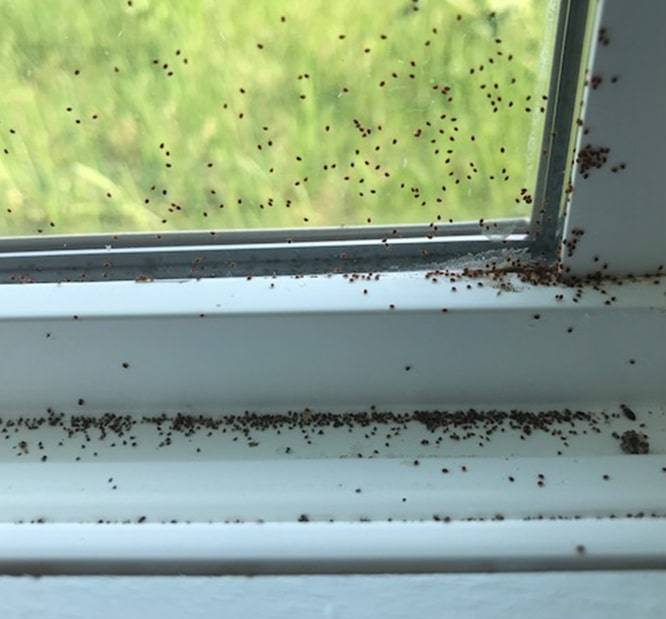
Hey there, fellow homeowners and nature lovers! Are you tired of those annoying clover mites invading your home and causing chaos on your window seals? Well, you’re in luck because today, we’re diving deep into the world of clover mites and uncovering the best ways to bid them farewell for good.
First things first, let’s talk about what exactly clover mites are. These little critters, scientifically known as Bryobia praetiosa, are tiny arachnids that measure less than a millimeter in length. Despite their small size, they can quickly become a big nuisance, especially when they decide to make themselves at home in your house.
So, what’s the deal with clover mites and window seals? Well, these little guys love basking in the sun, and what better place to soak up some rays than on a warm window seal? Plus, they’re attracted to vegetation, so if you have plants near your windows, you might find yourself with an unwelcome clover mite infestation.
Now that we know who we’re dealing with, let’s talk about how to kick these tiny pests to the curb. Here are some tried and tested methods for getting rid of clover mites:
Seal Up Cracks and Gaps: Clover mites can squeeze through even the smallest of openings, so it’s essential to seal up any cracks or gaps around your windows and doors. Use caulk or weatherstripping to close off these entry points and prevent clover mites from finding their way indoors.
Keep Your Home Clean: Clover mites are attracted to dust and debris, so keeping your home clean and tidy can help deter them from taking up residence. Vacuum and dust your window seals, baseboards, and other areas where clover mites like to hang out regularly to keep them at bay.
Trim Vegetation: Since clover mites feed on plant sap, trimming vegetation around your home can help reduce their food source and discourage them from sticking around. Pay special attention to plants near your windows and doors, as these are common entry points for clover mites.
Use Natural Repellents: There are several natural repellents that can help keep clover mites away from your home. Peppermint oil, cedar oil, and diatomaceous earth are all effective options that won’t harm pets or children. Simply apply these repellents to your window seals and other areas where clover mites tend to gather to deter them from hanging around.
Professional Pest Control: If you’ve tried everything and still can’t seem to get rid of clover mites, it may be time to call in the professionals. Pest control experts have the knowledge and experience to effectively eliminate clover mites from your home using targeted treatments that are safe and environmentally friendly.
In conclusion, dealing with clover mites can be a frustrating experience, but with the right approach, you can banish these tiny pests from your home for good. By sealing up cracks and gaps, keeping your home clean, trimming vegetation, using natural repellents, and enlisting the help of professional pest control if needed, you can enjoy a clover mite-free living environment. So, say goodbye to those pesky critters and hello to clear window seals once againz
Clover Mites in your Window seal...call today 816-377-2811
Camel Crickets in Your Home
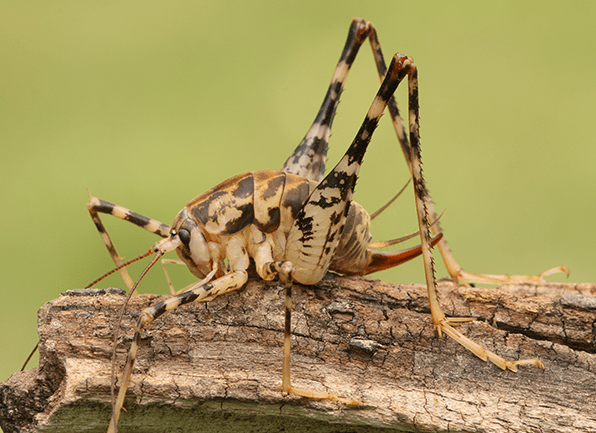
What are camel crickets?
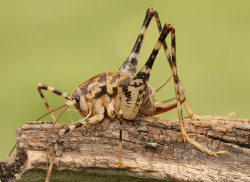
Most types of camel crickets have a place with the variety Ceuthophilus (Figure 4). This name portrays their humpbacked appearance when seen from the side. They have jumping rear legs and long antennae most crickets, yet they are wingless as can’t make a chirping noise The coloring on their bodies differs by species, extending from light tan to brown, regularly with dark bands on different parts of their bodies. Grown-ups extend from 0.5 to 1.5 creeps long.
At the point when camel crickets locate a helpful situation, they can get cumbersome. They scan for dull, moist situations like cellars, carports, sheds, ledge plates, rafters, sump siphons, piles of kindling, or gives in. Infestation is typically recognized by observing many crickets hopping and creating a ruckus. Since they don’t make a chirping commotion like the field cricket, they can stay unnoticed in your basement where the moisture is and breed like crazy.
Camel crickets have six long legs. Their rear legs are huge and molded like a drumstick which permits them to be incredible jumpers. The camel cricket’s middle has a humpbacked appearance. At the point when surprised, camel crickets will bounce toward what startles them rather than away. Be cautious when inclining towards a camel cricket to analyze it, as they will probably hop into your face.
Keep Camel Crickets out of your Home
Make a point to seal every single outside opening that could end up being passage focuses for crickets and their posterity, or zones that could give abundance dampness access to an unused space. In the event that you are seeing them in a cellar or slither space, consider buying a dehumidifier or fan to help with air dissemination and form anticipation.
Are Camel Crickets Dangerous
Camel crickets don’t represent any wellbeing dangers to people; however, they can turn into an irritation on the off chance that they gain access to the home. A few animal varieties have been known to harm garments and different textures like drapes. Avoidance Reduce regions of dampness in and around the home.
Basic Crickets
Sparkling dark in shading, they grow up to an inch and a quarter long with short, adjusted wings. Field crickets are emphatically pulled into light. Field Crickets are the destined to coincidentally enter homes in pre-fall and late summer searching for a warm safe house from colder nighttime. Typically, male Field Crickets will be seen because of their boisterous twittering.
Ground Crickets
Ground crickets typically are discovered outside, yet lights and the glow of structures may cause huge scope indoor attacks. In light of their little size, they think that its simpler to pick up section than
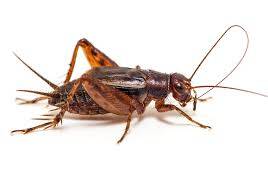
different crickets. They may do harm inside like field crickets. The twittering sound of the male is more piercing and sharper than that of field crickets.
The Field Cricket
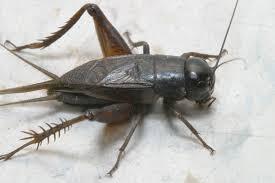
The field cricket is broadly conveyed over the United States. It is bigger than the house cricket and has wings stretching out past the wing covers. They are normally dim earthy colored to dark or blackish. Field crickets habitually attack houses and may benefit from simply soil or a wide assortment of different materials. Littler field crickets of they may likewise attack homes in pre-fall.
Infestations …Call Truly Green Pest Control
Bug issues can rapidly become an infestation. Bugs like crickets can multiply and breed rapidly and invade a property whenever left unchecked. Regardless of whether an invasion hasn’t settled in yet, visit examination and treatment by experts is a much better course to take than responding past the point where it is possible to a major issue. At Truly Green Pest Control, we know all the spots to search for camel crickets and different pest that go about as notice indications of bigger invasions. On the off chance that we discover an issue, our certified specialists will deal with it, and make a move to prevent future invasions fo camel crickets from occurring, as well.
With camel crickets and other aggressive insects, it’s smarter to take preventive action. Contact Truly Green Pest Control immediately.
Cicadas surviving in Rain?
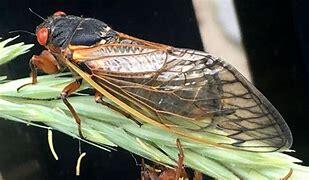
Can Cicadas Survive The Rain?
 Cicadas are coming out of their 15-to-17-year hibernation form underground, notably in the eastern part of the US and Midwest. Cicadas can be damaging to plants and other vegetation dear to us. Can something as simple as rains slow them down?
Cicadas are coming out of their 15-to-17-year hibernation form underground, notably in the eastern part of the US and Midwest. Cicadas can be damaging to plants and other vegetation dear to us. Can something as simple as rains slow them down?
If 2020 wasn’t bad enough, dig this name. Brood X! Where do they get these names from/ The Brood X. How about the murder Hornet? What if they all show up at the same time…hum.
Speaking of rain, and we had a lot of rain in the Midwest, Gene Kritsky, a biology professor at Mount St. Joseph University in Cincinnati, Ohio, said that the cicadas will try to take shelter from the rain, however, it does not kill them.
Typically, what happens when it rains the cicadas will scramble for shelter. The bad news is the rain will not hurt them. The wings shed water like feathers on a bird. What is fascinating is the periodical cicadas will live their nymph lives underground. Within a timeframe of 13 or 17 years underground.
Afterwards, it emerges out of ground and begin a molting process that will lead them into adult phase. Their job is getting ready for the next phase of 13 to 17 years by mating and laying eggs. Can you imagine that when you see this insect, you are looking at something that is 17 years old.
In the United States we are expected to see Trillions of Cicadas the Brood X in the later part of May and the latter part of June. There will be a numerous states expecting this cicada explosion this year, to be exaxt..in about a dozen U.S. states between Georgia and New York.
John Cooley, a researcher in the Department of Ecology and Evolutionary Biology at the University of Connecticut, told Newsweek that although rain is not fatal to cicadas, it does hamper their ability to fly.
Since cicadas are from the ground and live there for 17 years “The adults never go back in the ground, and rain makes it difficult to fly. They may try to shelter under leaves,” Cooley said.
Strong winds and storms could injure the cicadas due to their robust body as they fall to the ground. Once on the ground and if they are injured, they can be prone to their natural predator’s such as birds and even ants.
Like other insects, the cicada body has a waxy layer that protects it from waterlog. So, in a nutshell the water will not hurt them, but it will cause them to seek shelter under leaves and housing overlays.
How To Kill Mites in Soil
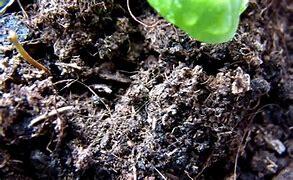
How To Kill Mites in Plant Soil

Beautiful plants may not be the only thing growing in your soil—it may also be the home to soil mites. If you’ve observed small, white dots walking across the top of your soil or along the edges of your plant’s pot, there’s a good possibility these mites have set up shop in your soil. According to the University of Illinois Extension, mites can range in size. Some mites are about the size of pinpoints, although others can get to up to 1/8-inch in diameter. Fortunately, mites are usually just nuisances and do not bother the plant; however, there are a few ways in which to remove the mites and let your plants be the only tenants in the soil.
Step 1
Clean and screen the soil. In accordance to the University of Illinois Extension, mites feed off of leaf mold, decaying plant materials and peat moss. For that reason, eliminating any waste in the soil will give the mites less to live on, which may lead to their removal.
Step 2
Re-pot your plant into sterile soil. In addition, make sure your pot is thoroughly clean and void of any soil or debris.
Step 3
Drench the plant’s roots to remove the old soil before placing it inside the new soils and pot. Although it is important to remove as much of the old dirt as possible, you must re-pot the plant quickly before its roots dry out or the plant could die.
Step 4
Apply insecticides that consist of pyrethrins to the soil. Note any dilution instructions and follow the directions on the label.
Related Reading
House Centipedes in Kansas City
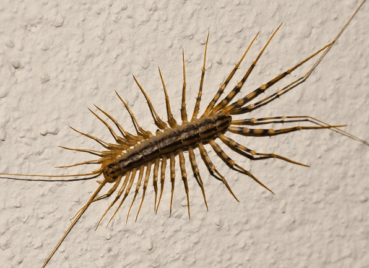
Controlling House Centipedes
Appearance
What Do They Look Like?
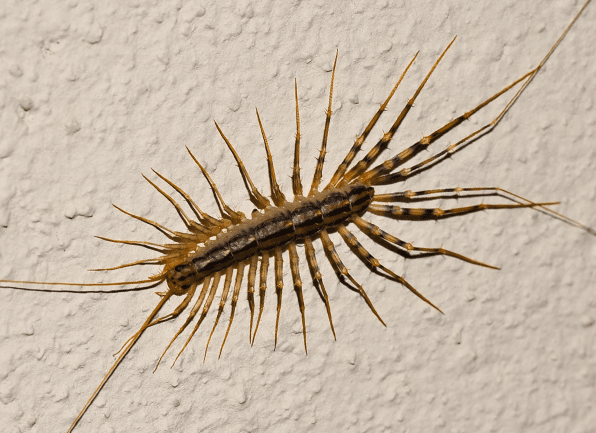
- Size: House centipedes have long, flattened bodies, which can measure as long as 1-1/2 inches long
- Color: The body is a yellowish-brown with three dark stripes running along the top of the body with lighter shading between them.
- Eyes: They have large, well-developed eyes.
- Legs: The arthropods have 15 segments, and each feature one pair of legs. The centipede’s legs are long, slender, and thread-like, and have black and white banding. On females, the last pair of legs is more than twice as long as the body.
How Did I Get House Centipedes?
Centipedes are usually found in damp dark areas. This is what they prefer.If your home has any leaks and prone to dampness, you will attract this type of pest. These pests can be found around stools, sinks, bathtubs and definitely in the basement, since moist conditions are usually in the basement.
Are House Centipedes Dangerous?
It is very rare that a centipede will bite you. It can happen but not often. They can be labeled as a beneficial insect since they prey and eat other insects. In a since, they are not harmless to humans. Centipedes is not a welcome site. All those legs and slender body…Smashing them on the spot can leave behind a nasty stain.
Infestation Signs
Like other insect centipedes are hard to find. They do not infest like other insects. They you find out you got them is by spotting them in the bathtub, or a basin.
How to Get Rid of House Centipedes?
What Truly Green Pest Control Does?
When your home becomes infested with these slender bugs then you will need to call in Truly Green Pest Control to get the best advice in clearing your home of these pest. Naturally and organically.
- Inspection: Determine source of the problem
- Traps: Monitoring traps is a good method of pinpointing areas of infestation
- Remove Clutter: Alter the environment by removing clutter that these pest love
- Kill Other Pests: Other pest is an excellent way of getting rid of centipedes since the other pest are an excellent source of food. So don’t focus on exterminating just the centipede but focus on the whole home of any pest that may cause centipedes taking up residence.
More Information on Centipedes
- Centipede Bites
- How Many Legs Does a Centipede Have?
- Millipedes’ vs Centipedes
- What do Centipedes Eat?
- Are Centipedes Dangerous?
- Centipedes in the Bathroom
- Centipede Repellents
- How Do centipedes Get in the House
- What Attracts Centipedes